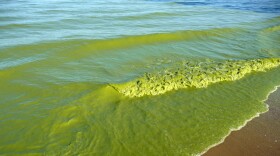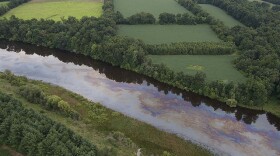-
The EPA is proposing to designate two chemicals from the PFAS group of more than 4,000 chemicals as hazardous substances. PFOS and PFOA are the most commonly found to be contaminating water.
-
Mallard duck populations are down about 16 to 17 percent since the early 2000s. New technology might help determine why.
-
"Several thousand gallons" of liquid containing hexavalent chromium have spilled into the Huron River. State regulators are urging people not to play in or drink from the river until further notice.
-
A federal grant allows the Cooperative Institute for Great Lakes Research at the University of Michigan to expand the scope of its research.
-
Long-term forecasts of less rain leads researchers to predict there will be a less severe outbreak of harmful cyanobacterial blooms. But where and when storms might hit, the number of hot days, and wind direction all complicate the forecast.
-
Piping plovers are nesting in more places, and in slightly greater numbers.
-
The federal Bipartisan Infrastructure Law makes an additional $1 billion available for most Areas of Concern cleanup by 2030. The Kalamazoo River and Saginaw Bay will take longer.
-
Michigan’s lack of septic system regulations is causing problems for some of its most pristine lakesSome Michigan lakes that were once the homes of scattered summer cottages are now lined with year-round homes. That's increased the number of septic systems and the amount of wastewater they're handling. Now, some of those lakes are seeing areas of high E. coli bacteria and new vegetation growth, likely from increased amounts of human fertilizer.
-
As some rural towns lose population and government funds shrink, their drinking water systems are one failure away from crisis.
-
The "Pipeline Safety: Unusually Sensitive Areas for the Great Lakes, Coastal Beaches, and Certain Coastal Waters" rule went into effect last month. Gas and oil industry groups want a chance to redefine what "Unusually Sensitive Areas" means.
Play Live Radio
Next Up:
0:00
0:00
Available On Air Stations










